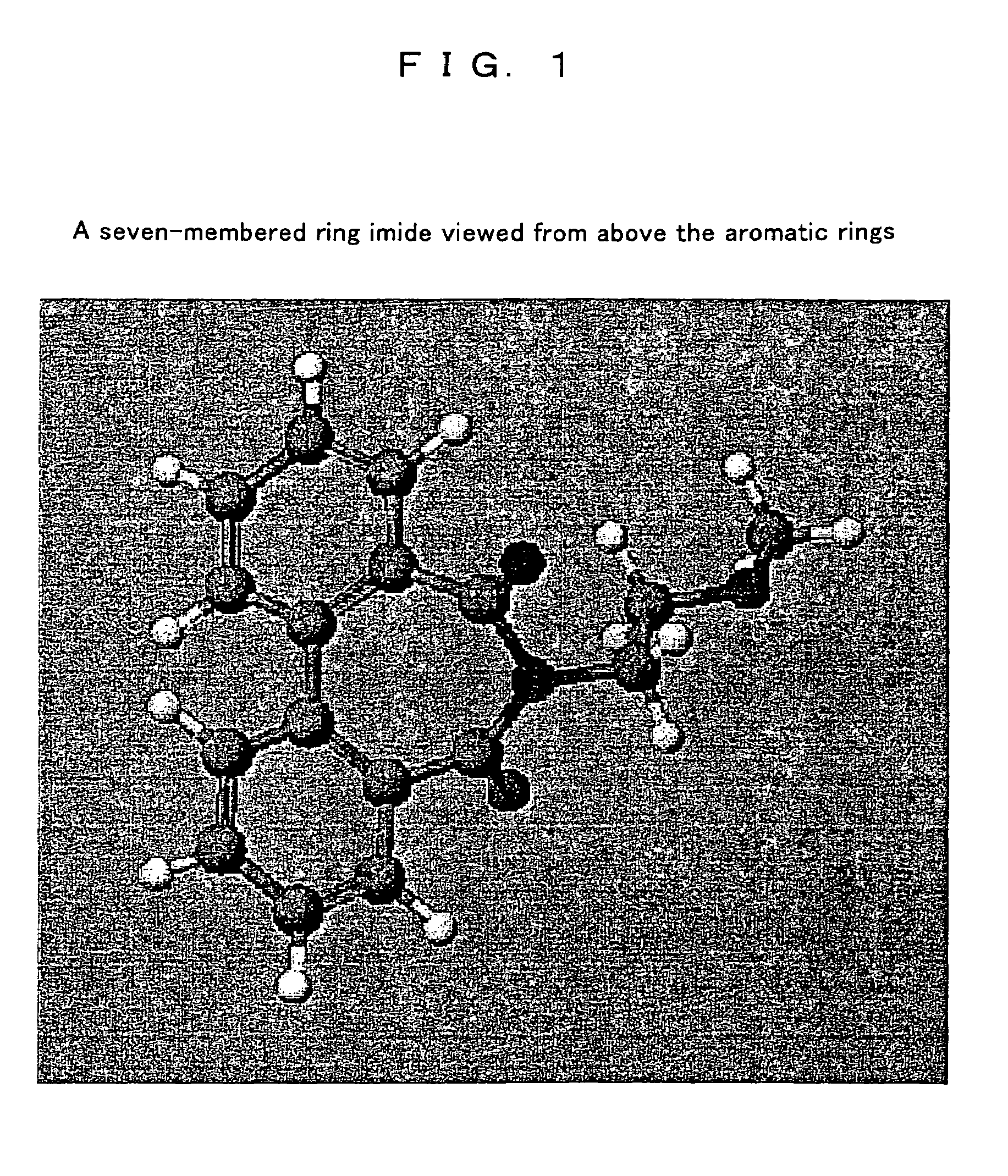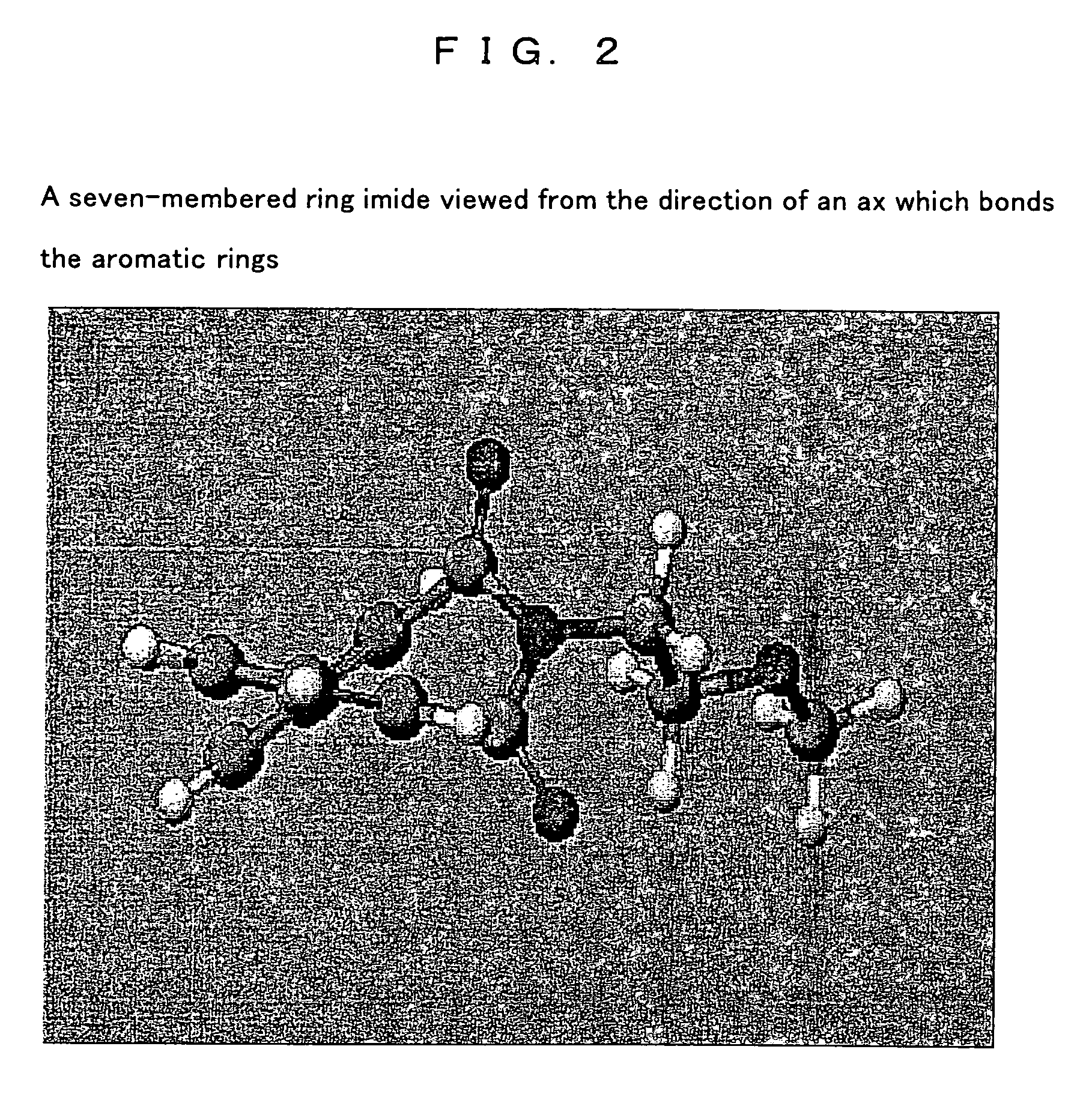Photo radical generator, photo sensitive resin composition and article
a technology of photo radicals and generators, applied in the field of photo radical generators and resin compositions, can solve the problems of reducing the reliability of final products, affecting the quality of layers, deteriorating light resistance, etc., and achieves high heat resistance and stability of products and films, high product yield, and high heat resistance and stability.
- Summary
- Abstract
- Description
- Claims
- Application Information
AI Technical Summary
Benefits of technology
Problems solved by technology
Method used
Image
Examples
example
Example 1
[0166]A 1 L eggplant-shape flask was charged with 11.2 g (0.05 mol) of diphenic anhydride, 300 ml of N,N-dimethylformamide (hereinafter referred to as DMF) and a catalytic amount of pyridine, and stirred. Thereto, 3.8 g (0.05 mol) of 2-methoxyethylamine was added dropwise, which was then stirred at ambient temperature for 4 hours and then 100 ml of acetic anhydride was added to be stirred at 120° C. for 5 hours. DMF, acetic anhydride and the like were removed by a rotary evaporator. The sample was dissolved to DMF in an appropriate concentration, dropped in distilled water, and re-precipitated to be refined. After that, re-crystallization was followed, thus, 13.7 g of a compound 1 represented by the following formula (one of the compound (a)) as needle crystals was obtained:
[0167]
example 2
[0168]A reaction was run in the same condition as in the Example 1 except that the amine as the starting material was altered to 2-ethanolamine. Each raw material was supplied in the same number of moles as in Example 1. In the reaction, a compound 2 (one of the compound (a)) wherein a hydroxyl group in the end was acetylated by acetic anhydride was quantitatively obtained since an amine having hydroxyl groups in the ends was used:
[0169]
example 3
[0170]A reaction was run in the same condition as in the Example 1 except that the amine as the starting material was altered to 2-(2-aminoethoxy)ethanol. Each raw material was supplied in the same number of moles as in Example 1. In the reaction, a compound 3 (one of the compound (a)) wherein a hydroxyl group in the end was acetylated by acetic anhydride was quantitatively obtained since an amine having hydroxyl groups in the ends was used:
[0171]
PUM
| Property | Measurement | Unit |
|---|---|---|
| weight temperature | aaaaa | aaaaa |
| temperature | aaaaa | aaaaa |
| wavelength | aaaaa | aaaaa |
Abstract
Description
Claims
Application Information
 Login to View More
Login to View More - R&D
- Intellectual Property
- Life Sciences
- Materials
- Tech Scout
- Unparalleled Data Quality
- Higher Quality Content
- 60% Fewer Hallucinations
Browse by: Latest US Patents, China's latest patents, Technical Efficacy Thesaurus, Application Domain, Technology Topic, Popular Technical Reports.
© 2025 PatSnap. All rights reserved.Legal|Privacy policy|Modern Slavery Act Transparency Statement|Sitemap|About US| Contact US: help@patsnap.com



